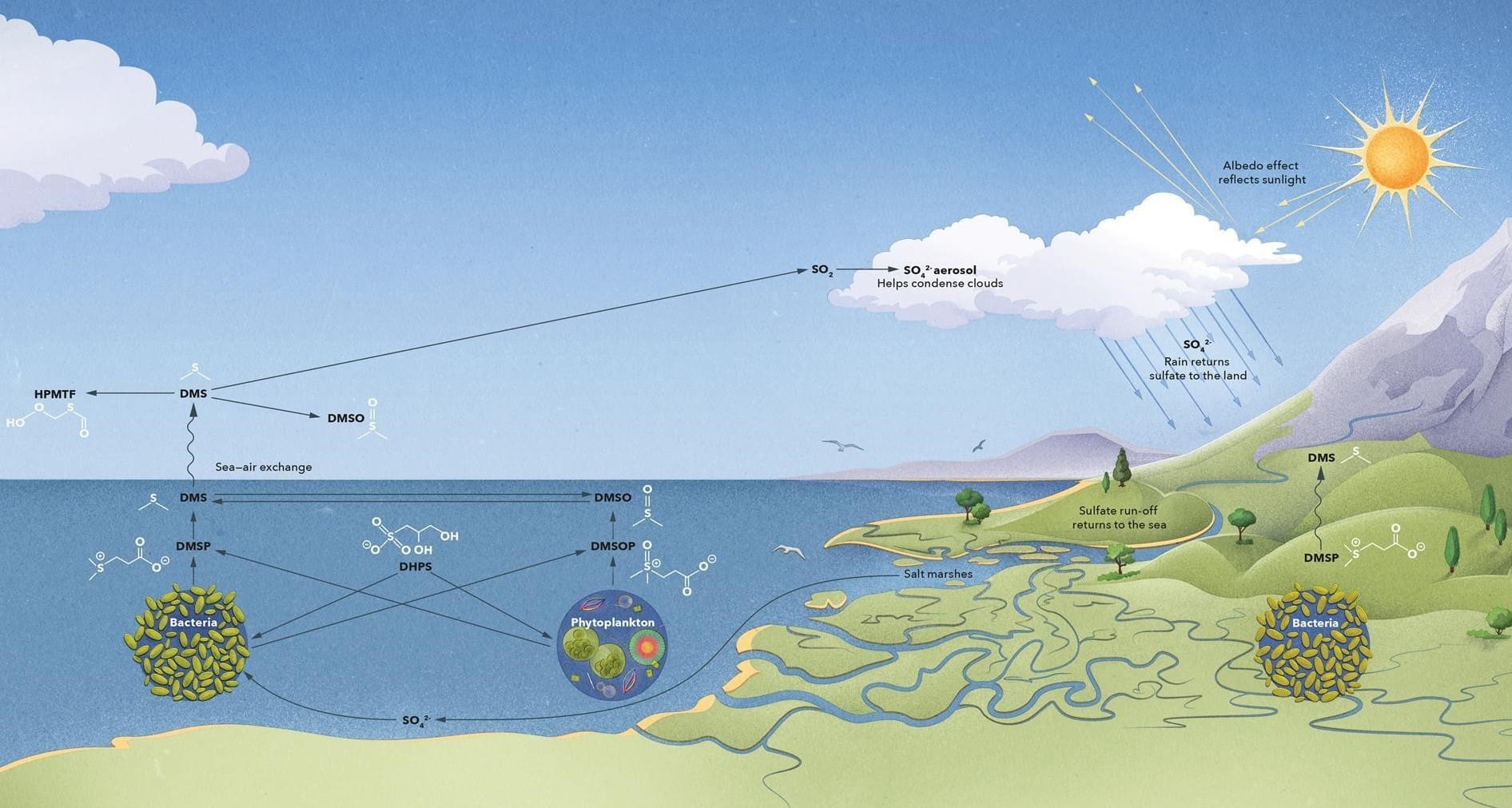
The sulfur cycle is a vital and fascinating process that plays a significant role in Earth’s ecosystems. It involves the biogeochemical cycling of sulfur through various stages, including both organic and inorganic forms. From the formation of sulfur compounds deep within the Earth’s core to its uptake by plants and conversion into essential proteins, the sulfur cycle is a complex network of interactions that sustain life on our planet.
In this article, we will delve into 11 extraordinary facts about the sulfur cycle that will captivate your curiosity. By exploring these intriguing facets of the sulfur cycle, we can gain a deeper understanding of its importance in ecological balance and how it impacts various life forms, from microorganisms to plants and animals.
Key Takeaways:
- Sulfur is crucial for life, found in proteins and vitamins. It moves through the environment in different forms, driven by microorganisms and volcanic activity, impacting climate and ecosystems.
- Human activities have altered the sulfur cycle, leading to environmental issues like acid rain. Understanding sulfur’s role is vital for managing ecosystems and reducing impacts.
Sulfur is an essential element in the biosphere
Sulfur is a vital element for all living organisms. It plays a crucial role in various biological processes and is found in proteins, vitamins, and coenzymes.
It is an integral part of the sulfur cycle
The sulfur cycle is the biogeochemical cycle that involves the movement and transformation of sulfur in different forms through various environmental compartments.
Sulfur can be found in different oxidation states
Sulfur exists in various oxidation states, ranging from -2 (in sulfide compounds) to +6 (in sulfate compounds). This flexibility allows sulfur to participate in diverse chemical reactions.
Microorganisms play a significant role in the sulfur cycle
Bacteria and archaea are key players in the sulfur cycle. They can carry out sulfur transformations, such as sulfate reduction and sulfur oxidation, which drive the flow of sulfur through ecosystems.
Sulfate-reducing bacteria produce hydrogen sulfide
Sulfate-reducing bacteria are capable of converting sulfate into hydrogen sulfide, a gas characterized by its distinctive smell of rotten eggs.
Volcanic activity releases sulfur into the atmosphere
Volcanoes release sulfur dioxide gas during eruptions. This gas can reach the upper atmosphere, where it reacts with other compounds to form sulfur aerosols.
Sulfur aerosols have a cooling effect on the climate
The sulfur aerosols produced from volcanic activity or industrial emissions can reflect sunlight back into space, leading to a temporary cooling effect on the climate.
Human activities have significantly altered the sulfur cycle
Industrial activities, such as burning fossil fuels and smelting metals, have significantly increased the amount of sulfur emissions into the atmosphere. This has led to environmental issues, including acid rain and air pollution.
Sulfur plays a role in the formation of minerals
Sulfur can combine with other elements to form various minerals, including sulfides, sulfates, and elemental sulfur deposits.
Some bacteria can use elemental sulfur as an energy source
Elemental sulfur can serve as an energy source for certain bacteria. They can oxidize sulfur and use the released energy for their metabolic processes.
The sulfur cycle is closely linked to the carbon and nitrogen cycles
Sulfur transformations, such as sulfate reduction and sulfur oxidation, are interconnected with the carbon and nitrogen cycles. These cycles influence each other and contribute to the overall functioning of ecosystems.
Overall, the 11 extraordinary facts about the sulfur cycle highlight the importance of sulfur in the biosphere and its intricate involvement in various biological and chemical processes. Understanding the sulfur cycle and its interactions with other biogeochemical cycles is crucial for the sustainable management of ecosystems and the mitigation of environmental impacts.
Conclusion
In conclusion, the sulfur cycle is a fascinating biological process that plays a crucial role in maintaining the balance of sulfur in our environment. From its participation in the formation of proteins and enzymes to its involvement in the production of vitamins and the regulation of atmospheric gases, sulfur cycle helps sustain life on Earth. Moreover, it has both terrestrial and aquatic components, making it a vital process in various ecosystems.Understanding the sulfur cycle and its intricacies allows us to appreciate the interconnectedness of different organisms and the environment. It highlights the importance of conserving sulfur resources and reducing human activities that contribute to sulfur pollution. By doing so, we can ensure the health and sustainability of our planet for generations to come.
FAQs
1. What is the sulfur cycle?
The sulfur cycle is a biogeochemical process that describes the movement and transformation of sulfur within different Earth compartments, including the atmosphere, lithosphere, hydrosphere, and biosphere.
2. How does sulfur enter the atmosphere?
Sulfur can enter the atmosphere through natural processes, such as volcanic eruptions and the release of sulfur-containing compounds by marine organisms. Human activities, such as burning fossil fuels and industrial processes, also contribute to sulfur emissions.
3. What role does sulfur play in ecosystems?
Sulfur is an essential element for living organisms. It is involved in the creation of proteins, enzymes, and vitamins. It also influences the growth and health of plants and plays a role in the regulation of atmospheric gases.
4. How does the sulfur cycle impact water bodies?
In aquatic environments, sulfur compounds can be cycled through processes like decomposition, mineralization, and sulfate reduction. These processes affect the nutrient availability, water quality, and overall ecosystem dynamics of lakes, rivers, and oceans.
5. What are the consequences of sulfur pollution?
Sulfur pollution can have detrimental effects on both human health and the environment. It contributes to the formation of acid rain, damages ecosystems, and can harm respiratory systems when inhaled by humans and animals.
6. Can sulfur be recycled?
Yes, sulfur can be recycled through the actions of bacteria and other microorganisms. These organisms transform sulfur compounds into different forms, facilitating the recycling of sulfur within the environment.
The sulfur cycle is a fascinating aspect of Earth's biogeochemistry, and understanding its intricacies can help us better appreciate the delicate balance of our planet's ecosystems. Exploring the sulfur cycle's connections to other biogeochemical cycles can provide a more comprehensive picture of how Earth's systems work together. Moreover, delving into the role of sulfur in environmental chemistry can shed light on the impact of human activities on the environment and the potential consequences for the future of our planet.
Was this page helpful?
Our commitment to delivering trustworthy and engaging content is at the heart of what we do. Each fact on our site is contributed by real users like you, bringing a wealth of diverse insights and information. To ensure the highest standards of accuracy and reliability, our dedicated editors meticulously review each submission. This process guarantees that the facts we share are not only fascinating but also credible. Trust in our commitment to quality and authenticity as you explore and learn with us.


